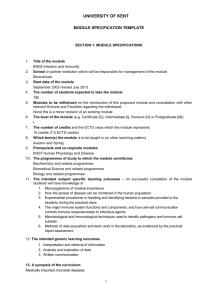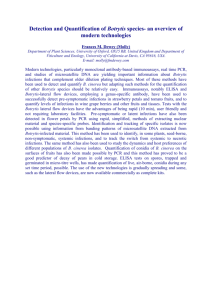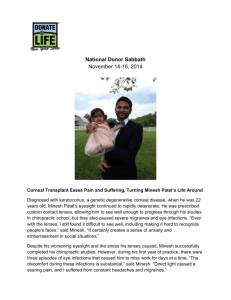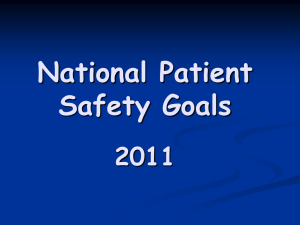1. Practical objectives - Rajarata University of Sri Lanka
advertisement
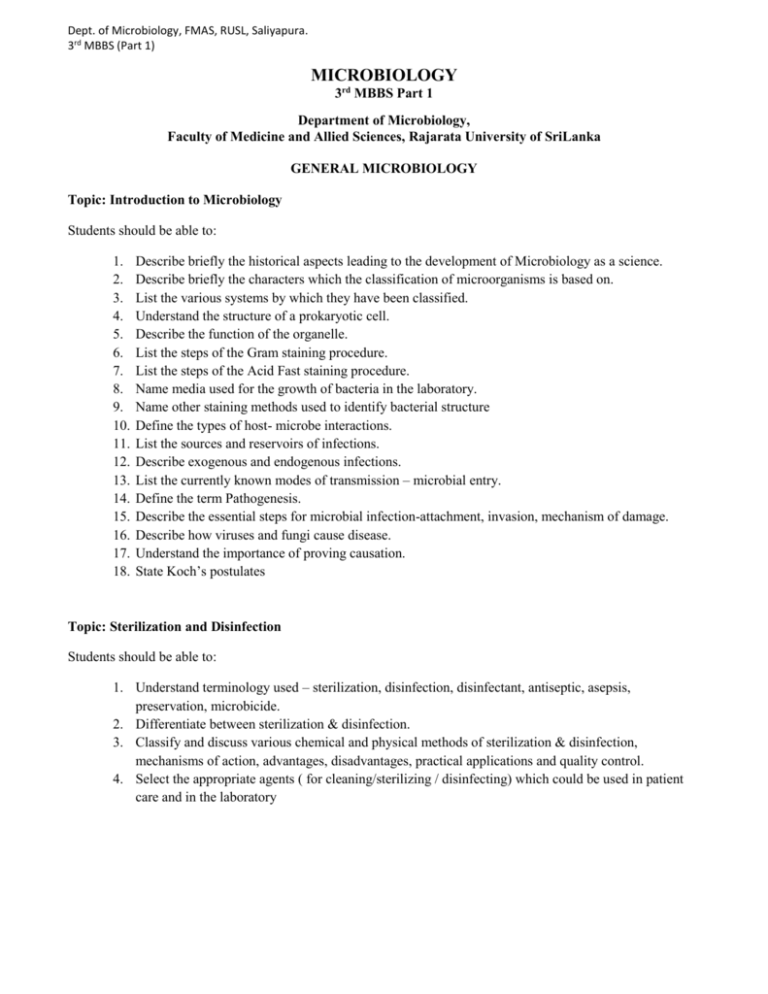
Dept. of Microbiology, FMAS, RUSL, Saliyapura. 3rd MBBS (Part 1) MICROBIOLOGY 3rd MBBS Part 1 Department of Microbiology, Faculty of Medicine and Allied Sciences, Rajarata University of SriLanka GENERAL MICROBIOLOGY Topic: Introduction to Microbiology Students should be able to: 1. 2. 3. 4. 5. 6. 7. 8. 9. 10. 11. 12. 13. 14. 15. 16. 17. 18. Describe briefly the historical aspects leading to the development of Microbiology as a science. Describe briefly the characters which the classification of microorganisms is based on. List the various systems by which they have been classified. Understand the structure of a prokaryotic cell. Describe the function of the organelle. List the steps of the Gram staining procedure. List the steps of the Acid Fast staining procedure. Name media used for the growth of bacteria in the laboratory. Name other staining methods used to identify bacterial structure Define the types of host- microbe interactions. List the sources and reservoirs of infections. Describe exogenous and endogenous infections. List the currently known modes of transmission – microbial entry. Define the term Pathogenesis. Describe the essential steps for microbial infection-attachment, invasion, mechanism of damage. Describe how viruses and fungi cause disease. Understand the importance of proving causation. State Koch’s postulates Topic: Sterilization and Disinfection Students should be able to: 1. Understand terminology used – sterilization, disinfection, disinfectant, antiseptic, asepsis, preservation, microbicide. 2. Differentiate between sterilization & disinfection. 3. Classify and discuss various chemical and physical methods of sterilization & disinfection, mechanisms of action, advantages, disadvantages, practical applications and quality control. 4. Select the appropriate agents ( for cleaning/sterilizing / disinfecting) which could be used in patient care and in the laboratory Dept. of Microbiology, FMAS, RUSL, Saliyapura. 3rd MBBS (Part 1) Topic: Bacterial Genetics Students should be able to: 1. Discuss mutations –spontaneous, induced 2. Understand the three major forms of prokaryotic genetic exchange, and their use. Topic: Antimicrobial agents and antimicrobial chemotherapy Students should be able to: 1. 2. 3. 4. 5. 6. Outline the history of development of antimicrobials Describe the mechanisms of action of antimicrobials Explain the mechanisms of resistance of organisms to antimicrobials Select antibiotics that can be used in combination for synergy Identify antibiotics for prophylaxis in special conditions Discuss the epidemiology of antimicrobial resistance of specific organisms and its implications in therapy 7. Select appropriate antimicrobial agents that can be used in treatment and prophylaxis, being aware of guidelines for empiric therapy culture and antibiotic susceptibility test (ABST) reports limitations (cost, availability, patient factors, etc...) IMMUNOLOGY Topic: Introduction to immunology and the immune system Students should be able to: 1. Discuss the overview of the Immune System i. The need of the Immune System ii. Structure iii. Function 2. Discuss Innate immunity i. Definition ii. Component of innate immunity iii. Mechanism of action 3. Discuss and describe the Complement System i. Introduction ii. Activators iii. Biological functions 4. Discuss Cytokines i. Introduction ii. Nomenclature of cytokines iii. Functions 5. Discuss Antigen i. Define – antigen, immunogens, epitope & hapten ii. Factors governing immunogenicity Dept. of Microbiology, FMAS, RUSL, Saliyapura. 3rd MBBS (Part 1) 6. Discuss Acquired immunity A) Humoral immunity i. Introduction ii. Phases and types of humoral immune responses Antibodies - Structure, properties and, functions of immunoglobulin iii. Effector functions B) Cell mediated immunity i. Introduction ii. Different phases of CMI iii. Effector functions of T cells Topic: Clinical Immunology Students should be able to: 1. Discuss the main disorders of the immune system A) Hypersensitivity List the hypersensitivity reactions Describe the immunopathological basis Describe the clinical presentations Describe the principles of management of each type B) Tolerance and Autoimmune disorders Define tolerance Mechanisms of tolerance Define autoimmunity and autoimmune diseases Mechanisms of autoimmunity Factors contributing to autoimmunity Spectrum of autoimmune diseases Principles of treatment C) Immunodeficiencies Classification of immunodeficiency When to suspect How to investigate 2. Discuss immunity to infections i. Innate immune mechanisms ii. Acquired immune mechanisms iii. Injurious consequences of immune response. iv. Evasive mechanisms by the microbes. 3. Discuss the methods of acquiring immunity and Immunization i. Methods of acquiring immunity ii. Immunological basis for vaccination. iii. Schedule of EPI vaccination. iv. Non-EPI vaccines available in Sri Lanka Dept. of Microbiology, FMAS, RUSL, Saliyapura. 3rd MBBS (Part 1) SYSTEMATIC MICROBIOLOGY Common objectives for Systematic Bacteriology Students should be able to: 1. 2. 3. 4. 5. 6. Describe the general characteristics of the Genus List the important species in the genus Explain the pathogenesis of infections caused by them. Describe the diseases and clinical syndromes caused by the species Advice on and be able to collect and transport relevant microbiological specimens. Identify the important species by their microscopic & culture characteristics, and list the microbiological tests available for the diagnosis of these infections 7. Use appropriate antibiotics for their treatment 8. Describe the epidemiology and explain measures for prevention and control of these infections. Topics for Bacteriology 1. 2. 3. 4. 5. 6. 7. 8. 9. 10. 11. 12. 13. 14. Staphylococci Streptococci, Enterococci Gram positive Bacilli Small gram negative bacteria – Parvobacteria Legionella , Campylobacter Neisseria , Moraxella Vibrionaceae – Vibrio, Plesiomonas, Aeromonas Pseudomonas Enterobacteriaceae- Shigella / Salmonella /Escherichia/ Klebsiella/ Proteus Rickettsiae , Mycoplasma Spirochaetes Mycobacteriaceae & Actinomycetes Chlamydia and Chlamydophila Anaerobes Mycology Students should be able to: 1. List the aetiological agents, identify the clinical features and recognize common superficial, cutaneous, subcutaneous and systemic fungal infections 2. Describe their pathogenesis 3. Advise on collection and transport of specimens for their laboratory diagnosis 4. Treat and advise on prevention (if any) of fungal infections Common Objectives for Systematic Virology Students should be able to: 1. Define viruses, describe and discuss the general characteristics of viruses. 2. Outline the classification of viruses. 3. Describe the characteristics of viruses belonging to specific families. Dept. of Microbiology, FMAS, RUSL, Saliyapura. 3rd MBBS (Part 1) 4. 5. 6. 7. 8. 9. Explain the pathogenesis of infections caused by them. Describe the diseases and clinical syndromes caused by the viruses Advice on and be able to collect and transport relevant specimens for diagnosis of viral infections. List the microbiological tests available for the diagnosis of these infections Use appropriate regimes for treatment and management Describe the epidemiology and explain measures for prevention and control of these infections. Topics for Virology 1. Introduction to Virology 2. Viruses of the respiratory tract 3. Pox Viruses 4. Parvo virus 5. Papilloma virus 6. Slow viral infections 7. Retro viruses and HIV 8. Herpes group of viruses 9. Mumps 10. Measles 11. Rubells 12. Enteroviruses 13. Arbo viruses 14. Hepatitis viruses 15. Diarrhoegenic viruses 16. Rabies CLINICAL MICROBIOLOGY 1. Topic: Collection and Transport of Specimens Students should be able to: 1. Explain the principles involved in collecting a ‘good’ specimen for microbiological diagnosis of an infective disease. 2. Advice on collection and transport of specimens for microbiological diagnosis in the context of The underlying pathogenesis Duration of illness Tests available in the country Where they are done 2. Topic: Infection Control Students should be able to: 1. Explain the principles and practices of infection control (IC) in hospitals 2. Describe the sources of micro-organisms, routes of transmission and key principles of infection control 3. List the essential elements of universal precautions and standard precautions 4. Understand the importance of risk assessment and management in infection control Dept. of Microbiology, FMAS, RUSL, Saliyapura. 3rd MBBS (Part 1) 3. Topic: Urinary tract Infections Students should be able to: 1. 2. 3. 4. Explain the pathogenesis of uncomplicated and complicated urinary tract infections Explain the principle underlying microbiological diagnosis of UTI Describe the methods of collection and transport of urine for culture Outline principles of treatment and prevention of UTI 4. Topic: Sexually Transmitted Infections Students should be able to: 1. List the sexually transmitted infections 2. Explain the principle underlying microbiological diagnosis of the common STI (syphilis, gonorrhea, herpes simplex etc ) 3. Describe the methods of collection and transport of samples for microbiological diagnosis 4. Outline principles of treatment and prevention 5. Topic: Skin infections Students should be able to: 1. 2. 3. 4. Describe the risk factors for infections of the skin State the most likely organisms associated with the infections. Describe the methods of collection and transport of samples for microbiological diagnosis. Outline principles of treatment and prevention. 6. Topic: Bone and Joint Infections Students should be able to: 1. 2. 3. 4. List Infections of skeletal system Explain the pathogenesis of osteomyelitis, septic arthritis Describe the methods of collection and transport of samples for microbiological diagnosis Outline principles of treatment and prevention 7. Topic: Upper and Lower Respiratory Tract Infections Students should be able to: 1. 2. 3. 4. List the infections which occur in the respiratory tract and associated organs State the most likely organisms associated with infections at each site Recall the source and virulent factors associated with respiratory tract infections Describe the specimen (Including mode of collection and transport ) and diagnostic tests used to determine the aetiology of infections of the respiratory tract Dept. of Microbiology, FMAS, RUSL, Saliyapura. 3rd MBBS (Part 1) 8. Topic: Abdominal, Gastrointestinal Infections and Food Poisoning Students should be able to: 1. 2. 3. 4. List the causes of infective diarrhea and food poisoning Describe the pathogenesis of infective diarrheas State the key methods of diagnosis of infective diarrhea and food poisoning Outline key methods in preservation of diarrhea and food poisoning 9. Topic: Congenital Perinatal and Neonatal Infections Students should be able to: 1) List the causes of congenital, perinatal and neonatal infections. 2) Describe the transmission, pathogenesis, clinical manifestations and risk factors associated with the infections. 3) State the key methods of diagnosing the organisms associated with the infections 4) Outline the methods and principles of treatment and prevention. 10. Topic: CNS Infections Students should be able to: 1) List normal protective measures of CNS 2) Discuss the methods of invasion of CNS by pathogens and pathogenesis of CNS infections(meningitis, encephalitis, encephalopathies, prion disease and brain abscesses) 3) Describe different types of meningitis 4) Describe different types of encephalitis and encephalopathies 11. Topic: Hospital Acquired Infections Students should be able to: 1) 2) 3) 4) Define ‘Hospital Acquired Infections(HAI)’ Define ‘nosocominal pathogens’ Define ‘Opportunistic infection’ Be aware of the nature ,extent and cost of hospital acquired infections 12. Topic: Infective Endocarditis Students should be able to: 1. State the risk factors for infective endocarditis 2. Describe the pathogenesis of infective endocarditis 3. List the important pathogens and factors which contribute to these organisms causing infective endocarditis 4. Discuss how the pathogenesis of infective endocarditis contributes to the symptoms and signs of the disease and in selection of diagnostic tests Dept. of Microbiology, FMAS, RUSL, Saliyapura. 3rd MBBS (Part 1) 13. Topic: Ear and Eye Infections Students should be able to: 1) List and define the types of eye and ear infections. 2) List the causes of each type of eye and ear infections. 3) List the signs and symptoms each type of eye and ear infections. 4) Discuss the principles of microbiological methods in the diagnosis of eye and ear infections. 5) Discuss the important aspects of management of eye and ear infections. 6) Describe the measures to prevent eye and ear infections. 13. Topic: Pyrexia of Unknown Origin & Sepsis Students should be able to: 1) Define bacteraemia, septicaemia and septic syndrome 2) Describe laboratory diagnosis of bacteraemia and septicaemia including collection, processing and reporting of appropriate specimen 3) Identify the source of bacteraemia and septicaemia 4) Describe the pathogenesis of septicaemia, septic syndrome Practicals Students should be able to: 1. List the steps of the Gram staining procedure 2. Effectively stain smears with Gram stain procedure, observe pathogenic bacteria under the microscope and describe the microscopic field. 3. List the steps of the Acid Fast Staining procedure and describe the microscopic findings of a smear stained using the above procedure. Recommended References Jawetz, E Medical Microbiology - 24th editions. Cedric Mims Medical Microbiology – 4th edition David Greenwood Medical Microbiology – 17th edition



